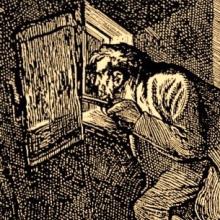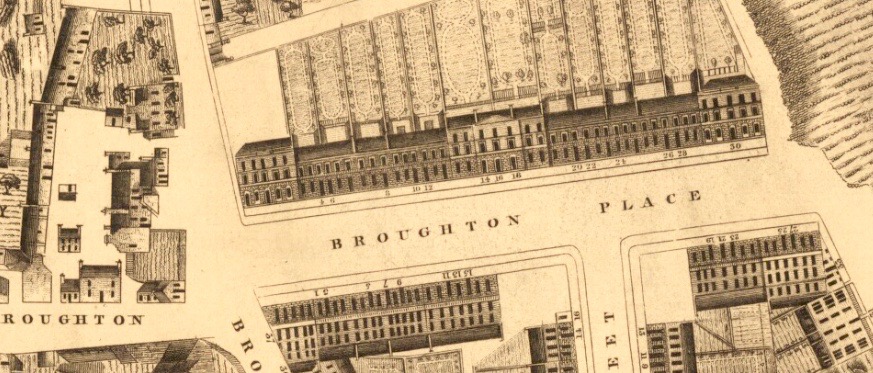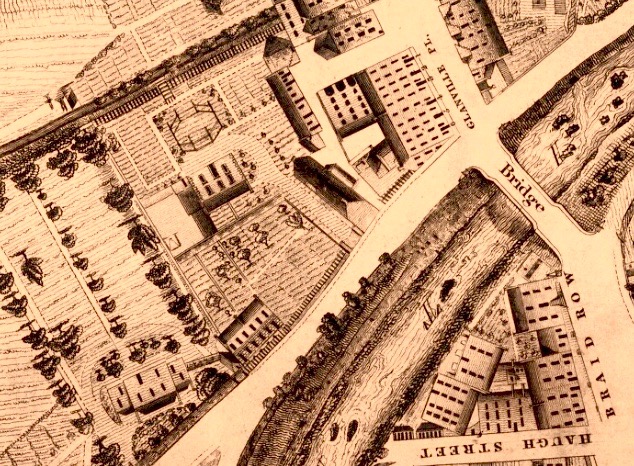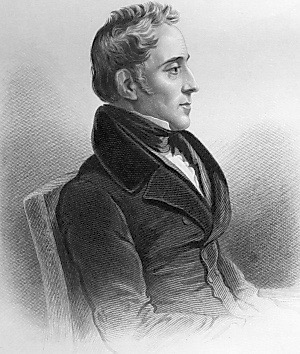
A spike in the number of Edinburgh burglaries made headlines last summer.
Police Scotland's Sir Stephen House pinned much of the blame on unsporting East Europeans who leave the country before they can be arrested, and on young people going on crime sprees whilst awaiting punishment for other misdemeanours.
'It's not that we are not making the arrests,' said the Chief Constable. 'Often we know who is doing it, and they will continue to do it if they are still out on the streets.'
Serial housebreaking, though, is an age-old problem, as evidenced by the following report in the Scots Magazine of November 1816.
HIGH COURT OF JUSTICIARY
ON Monday 5th February came on the trial of David Thomson, accused of the following several acts of theft and housebreaking:
—1st, in company with John Reid, an accomplice, on the 28th February 1813, of breaking into the house, at Burdiehouse, in the parish of Libberton, and county of Edinburgh, then occupied by William Bisset, publican there, by cutting out a pane of glass and a piece of a window shutter of one of the windows with a knife, and carrying away, from a locked drawer, a silver watch, and various other articles.
—2d, On the 8th day of April 1815, of breaking into the house in Antigua-street [No. 2] occupied by Robert Hall, merchant in Edinburgh, by entering the window of the water closet, and carrying away two great coats, two hats, and two pairs of shoes.

—3d, On the 24th day of September 1815, of breaking into the house, in Broughton place, then occupied by Mr Alexander Mackay, bookseller, by throwing up the window of a room in the house, and forcing open the shutter, and stealing a silver toddy ladle and some other articles. [Mackay's shop and circulating library were located at 154 High Street. He normally resided at 94 Nicolson Street.]

—4th, On the 11th day of November 1815, of breaking into the shop of John Primrose, shoemaker in the Kirkgate of Leith [warehouse at No. 139], by wresting off a piece of the outer shutter of the window, and breaking a pane of glass, and stealing two pair of boots, and two odd half boots.

—5th, On the 3d day of December 1815, of breaking into the house then occupied by Mrs Katharine Hamilton at Stockbridge [doctor's widow, formerly of 28 London St; then, from 1813, at 10–11 Hamilton Place], by opening one of the windows, and forcing and breaking the blind, and stealing two table-cloths, a green cloth cover for a table, a red leather case containing cards, six desert knives and forks with silver handles, a dozen of silver table spoons, a large silver dividing spoon, a tea cady, and a medicine chest containing a number of small bottles.

—No objection being made to the relevancy of the indictment, a number of witnesses were called in support of the prosecution. Three declarations were then proved they went completely to criminate the pannel himself, and in the most material circumstances agreed with the charges of the indictment. The only witness called in his favour was Mr Robert Watson, his late master [probably the Robert Watson, coal merchant, Broughton Street], who gave him a good character during the time he was in his service.
The jury was then addressed on the part of the crown by the Lord Advocate—and by Francis Jeffrey, Esq. [pictured below] on the part of the prisoner, after which the jury retired for a short space, and returned a verdict of Guilty of the 3d and 5th charges contained in the indictment; and next day, after an impressive admonition from the Lord Justice Clerk, the pannel was sentenced to be executed at Edinburgh on Wednesday the 13th day of March next.

Thomson was duly hanged, one of three men to suffer that fate in Scotland in 1816.
[Addresses are extracted from The Post Office Annual Directory, various years. Image of The Kirkgate is from James Grant, Old and New Edinburgh (1880), Vol VI. Maps here are details from Kirkwood's 'Plan and Elevation of the New Town', 1819.]